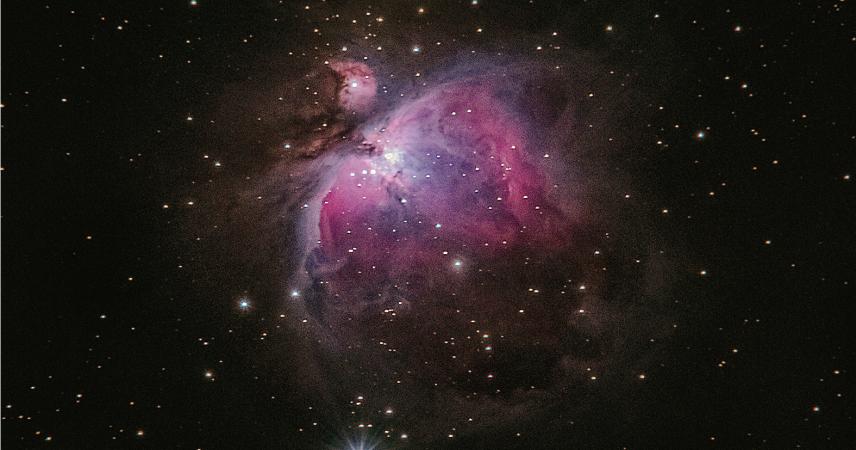13.8 billion years ago, at a time that we call the Big Bang, a very small region of the universe, for reasons that we still do not know, began to expand rapidly. All that we can see, and what we can’t see, comes from this very, very small region.
In its beginnings, the universe was a kind of really hot soup, in which everything collided at high speed. As it expanded and cooled down, the molecules began to cluster in huge clouds of gas, called molecular clouds. These clouds were the cradle of the early stars.
As more and more stars were formed, structures were revealed in which they were grouped together, known as galaxies. We now know that galaxies also group together to form clusters, which in turn form superclusters, filaments and walls, in a kind of cosmic web, the largest structure in the universe.
Measurements and distances in the universe are so great that they are impossible to count in kilometres. This is why astronomers created two new units: the Astronomical Unit (AU) which represents the average distance between the Earth and the Sun, and is equivalent to 150 million kilometres. And for even greater distances the light year is used, which represents the distance that light covers in a year: approximately 9.5 billion kilometres.
To get an idea, our galaxy’s diameter is calculated as being 200,000 light years, while the nearest star to the Sun, Proxima Centauri, is 4.2 light years away.
From the oxygen that we breathe, to the calcium in our bones, including the copper and gold that we extract from mines, everything that exists on our planet except for hydrogen and helium, was formed inside a star, that probably died in a violent explosion.
Humans appeared right at the end of this film, in the galaxy known as the Milky Way. If we were to sum up the history of the universe in a calendar year, our galaxy would have been formed in May, our solar system in August, the first multicellular organisms in November, the plants on the 20th of December, the dinosaurs would have existed from the 25th to the 30th… and what about us?
According to this scale, the history of humanity is equivalent to the last minute of the last day of the year.
And now, if you want to know how a solar system like ours was formed, go to the table located in the middle of the room.
In order to be able to carry on towards point number 3, “Planetary formation”, you will have to continue along the guide on the floor until you come to a stop. You will have reached a circular table placed in the middle of the room and by using the tactile exhibit label on this, you will be able to access information about the installation.
